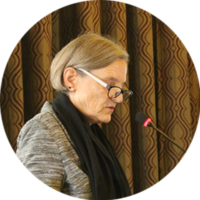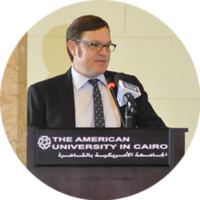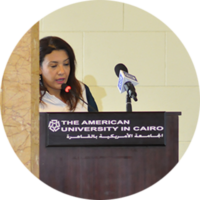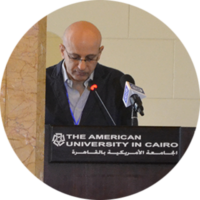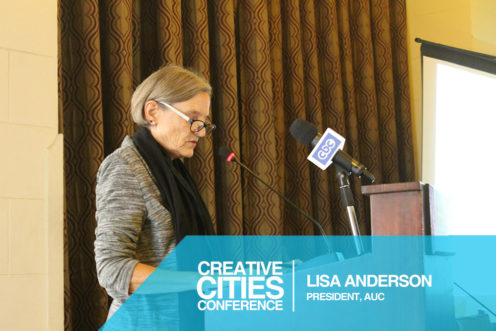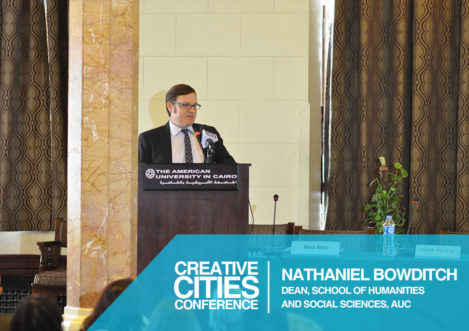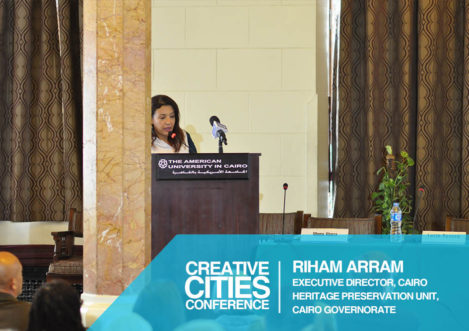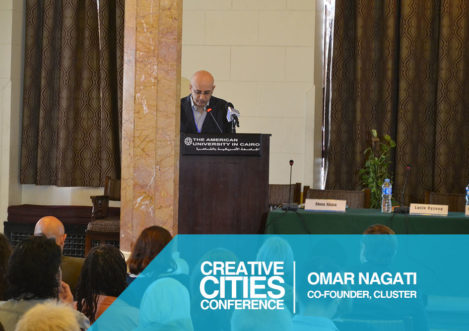Opening Remarks
The conference was inaugurated by The American University in Cairo’s President Lisa Anderson, who referred to the role AUC has played in building up a community around its Downtown campus in the past, and welcomed the conference as an opportunity for the institution to reflect on its evolving role. President Anderson reflected on the role that AUC can play in supporting and participating in the increasingly vibrant arts community Downtown. The campus’ prime location, overlooking Tahrir Square on the intersection of Muhammad Mahmud, Qasr al-‘Aini and Shaykh Rihan streets, means it “owns some of the most valuable real estate in Cairo, which makes it some of the most valuable real estate in the world.” How should AUC be using this property? And how can AUC think about the university’s evolution in the context of its neighborhood? How will changes that will happen, and that have already happened (AUC moved most of its student body to the New Cairo campus in 2008) affect the surrounding small businesses and residents? President Anderson spoke of the new Neighborhood Initiative that AUC is developing in collaboration with the American University in Beirut, to think about the roles that universities play in enhancing and sometimes inhibiting the flourishing of their own neighborhoods. She further addressed the question of government, asking what the government envisions for the area, and how AUC can play a constructive role in the re-envisioning of Downtown Cairo, “stripped as it may be of the ministries and government functions that have shaped the streets that surround us.”
Following President Anderson, Dean of the School of Humanities and Social Sciences, Nathaniel Bowditch spoke of the importance of the interdisciplinary nature of the conference, challenging the prevalent mode of hyper-specialization.
Riham Arram, Executive Director of the newly founded Cairo heritage preservation unit, spoke of the importance for Cairo governorate to participate in this conference that “includes all the disciplines with different and diverse views on how to preserve the heritage of Cairo and promote it as a creative city: addressing current challenges facing the city’s development, and how we may contribute from different positions.”
She related the preservation unit’s goals of preserving heritage as a means to safeguard cultural identity, provide an environment to encourage future creativity, and an economic asset to promote tourism. Arram cited the creation of the Cairo Heritage Preservation Unit two years ago as evidence of the renewed interest in Downtown’s heritage, and the need to protect this heritage. According to Arram, there are over 300 buildings that are listed as protected by the Cairo Governorate, and part of the preservation unit’s work is to develop a map, and plan, for repurposing some of these heritage spaces by the state.
The final remarks were given by CLUSTER’s own Omar Nagati, who referred to downtown’s history as a center for contemporary art and innovation, and warned against gentrifying the heart of the city, effectively turning it into a lifeless open-air museum. We must derive lessons from the past experiences of others, he said, and take into consideration the unique identity of Cairo, while also involving different stakeholders; business-owners, architects, residents, and especially artists, in the process of reimagining downtown Cairo.


